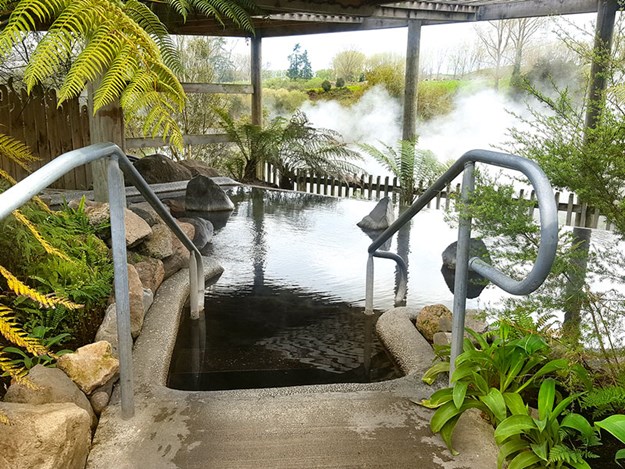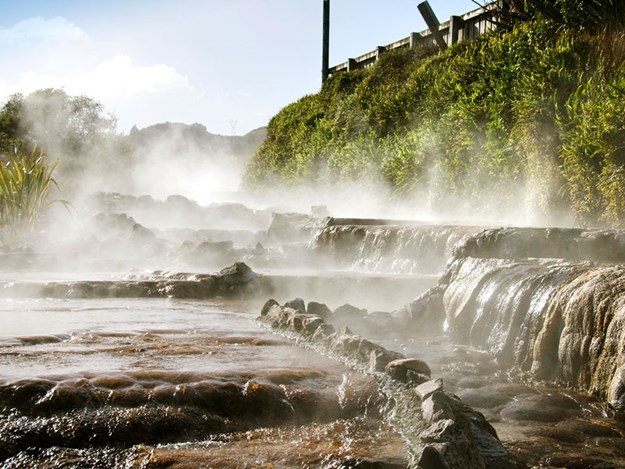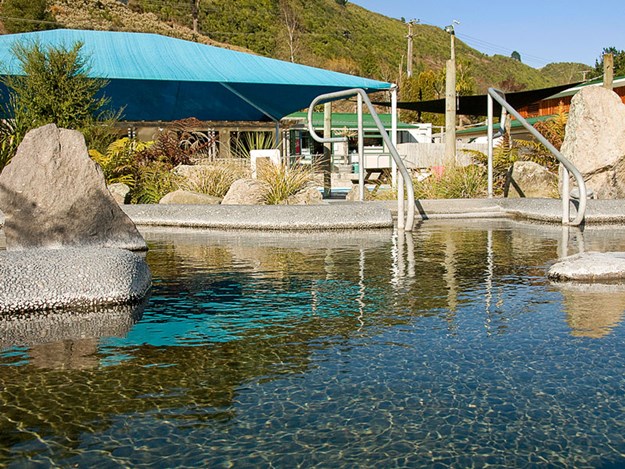 |
Waikite’s natural thermal waters are blissful for weary winter souls |
In the late 1850s, Ferdinand Von Hochstetter, an Austrian geologist and botanist, visited New Zealand. Among his many wanderings he came across a boiling spring and swamp in the Waikite Valley called Te Manaroa tucked between the hills halfway between Taupo and Rotorua.
Later, in the book about his wanderings, Ferdinand described this wonder as, “A spot that one day will be selected by members of the lost tribes as a central sanatorium for restoring and invigorating jaded mortals from all parts of the world”.
I’m not sure what lost tribes he was referring to. Well before Europeans came to this country, Maori people were enjoying the comforts and health benefits of the thermal waters they called Paparata – the Earth Doctor.
The first public pools were built in 1969 after weeks of fund raising and 4000 hours of volunteer labour by the local community and they were opened in 1972, more than a hundred years after Ferdinand’s prophesy.
Today steaming water gushes from the far side of the car park and flows through a pipe to trickle slowly down a man-made ‘cascade’, which is really a series of down-sliding rocks. When the water comes out of the pipe it is 98°C, and as it flows over the rocks it cools to 30-35°C before it flows into the pools.
After or before dipping your ‘jaded mortal self’ into the comfort of Paparata, a worthwhile jaunt which won’t tax your strength is a bushland walk beside a steaming river to the boiling cauldron of Te Manaroa Spring.
Here, clouds of steam rise from a pit of roiling water so deep that it’s measurement is unfathomable. The boiling water is discharged at a rate of 40-50 litres a second.
Microorganisms that live in this unlikely environment are thought to be related to the very first life forms to appear on earth.
They are known as extremophiles because they survive in extreme conditions. Mesmerised as I was by this scalding phenomena, I took care not to peer too closely lest I tipped in and ended up over cooked and not able to survive at all.
 |
The steaming water of the Otamakokore river |
On the banks of the hot river (the Otamakokore ) that flows from the spring, grow ancient mosses of a species that existed 380 million years ago. This blistering river only runs for about three kilometres before tipping into a cool stream adjacent to the modern pool complex.
But before it does, much of the vegetation that marks its course has been steam-cooked or browned to a crisp. Its rocky bed is streaked with white tracery formed from calcite and silica and on the water’s surface the swirling crusts of white material are the result of the high mineral content.
Back at the pools I had coffee in the on-site Pukeko in a Ponga Tree Café with Mark Bowie who, with his wife Lisa, is current owner of these assets. He explained the improvements that have been made over the past 14 years, pointing out how each private pool now has its own shower and a small balcony looking out over flaxes and ferns.
 |
Waikite offers six outdoor bathing options |
The other soak pools and the large sheltered swimming pool are also set among rocks and attractive plantings. “The camping ground right next door is a bonus,” Mark said. “It overlooks the rivers and has powered sites and thermally heated drying facilities. Unlimited access to the public pools is included in the camping fee.”
When we called in the Waikite Valley Thermal Pools we hadn’t intended to stay, but I’m pleased we did. We ate a light meal, luxuriously soaked our mortal selves for half-an-hour as we watched the stars wheel across a velvet sky.
We changed into night gear in the poolside dressing room and sloped off to bed for dreamless sleep. It was one of the few times that ‘getting into hot water’ had nothing but pleasure attached do it.
Location
Just 35 minutes from Rotorua and 45 minutes from Taupo. From Rotorua, travel South towards Taupo on SH5 (on the way to Tamaki Maori Village, Waimangu and Wai-o-tapu). Turn right opposite Wai-o-tapu onto Waikite Valley Road and travel 6kms - just follow the signs. Book by phone on (07) 333- 1861.





